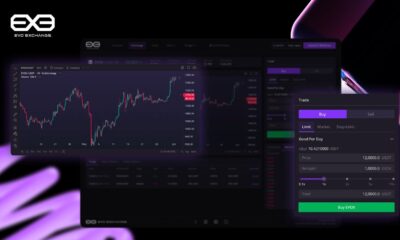Altcoins
Exploring the Cost of Synthetic Dollars: A Deep Dive into MakerDAO’s DAI and its Digital Counterparts

In the rapidly evolving world of digital finance, the emergence of synthetic dollars has introduced a nuanced dynamic into the traditional currency ecosystem. These digital assets, designed to maintain a peg to the U.S. dollar, have become a cornerstone in the blockchain domain, offering a bridge between the volatile world of cryptocurrencies and the relative stability of the U.S. dollar. However, the mechanics of maintaining this peg reveal a complex interplay of risk and innovation, particularly in how these assets are collateralized.
The principle behind synthetic dollars is straightforward: they are created to mirror the value of the U.S. dollar within the digital realm, providing a stable medium of exchange in an otherwise fluctuating market. Yet, the reality is more intricate. To ensure the stability of these digital dollars, a significant over-collateralization of assets is often required. This strategy is aimed at mitigating the risk of de-pegging from the U.S. dollar, a scenario that could erode trust and utility in the synthetic version. The necessity for over-collateralization underscores a fundamental vulnerability in the synthetic model: the need to lock up more value than the digital dollar represents, to safeguard its alignment with the U.S. dollar’s value.
Among the various blockchain-based assets pegged to the U.S. dollar, the Dai, created by MakerDAO, stands out as a prominent example. Unlike some of its counterparts, Dai’s peg to the dollar is partly supported by U.S. dollar assets, although it also relies on a broader spectrum of collateral including cryptocurrencies. This hybrid approach to backing has contributed to Dai’s success and resilience in the market. However, it also points to the broader challenges and complexities inherent in creating and sustaining digital assets tied to traditional currencies.
The proliferation of assets like Dai raises important questions about the future of currency and control in a digital age. While these synthetic dollars offer innovative solutions and alternatives to traditional financial systems, they also pose potential challenges to the dominance of established currencies like the U.S. dollar. The very nature of blockchain technology, with its emphasis on decentralization, suggests a future where the control and influence of traditional financial institutions, including central banks, could be diluted.
Moreover, the reliance on over-collateralization to maintain the peg to the U.S. dollar highlights a key vulnerability in the synthetic dollar model. This approach ties up significant amounts of capital that could otherwise be deployed more efficiently within the economy. It also exposes the digital dollars to the volatility of the assets used for collateralization, which could, in turn, impact their stability and reliability as a medium of exchange.
The emergence of synthetic dollars is reflective of a broader trend towards digitization and innovation in financial services. As these digital assets continue to evolve, they will likely play a pivotal role in shaping the future landscape of global finance. However, this evolution also brings to the forefront the challenges of balancing innovation with stability, and the potential for new technologies to disrupt established financial systems and currencies.
The ongoing development of digital assets pegged to the U.S. dollar underscores a fundamental shift in the understanding and utilization of money. As the line between traditional and digital finance continues to blur, the question of control becomes increasingly pertinent. While synthetic dollars offer a promising avenue for financial innovation, their ultimate impact on the U.S. dollar and the broader financial system remains to be seen. The journey of these digital assets is emblematic of the broader exploration within finance, as innovators, regulators, and users navigate the complexities of a rapidly changing landscape.
-

 Press Releases1 year ago
Press Releases1 year agoGaming Technologies of the New Time!
-

 Altcoins10 months ago
Altcoins10 months agoBitcoin Declines Below $80K: deVere CEO Nigel Green Remains Bullish on Long-Term Outlook Following Strategic U.S. Bitcoin Reserve Announcement
-

 Bitcoin1 year ago
Bitcoin1 year agoBitcoin Surges Past $64K as SEI and POPCAT Lead Daily Crypto Gains on September 25
-

 Altcoins9 months ago
Altcoins9 months agoCalls for Enhanced Discussion on Bitcoin as Brazil’s Reserve Asset: A Move Towards ‘Internet’s Gold’
-

 Press Releases2 years ago
Press Releases2 years agoEvo Exchange: Redefining the Decentralized Exchange Landscape
-

 Bitcoin5 months ago
Bitcoin5 months agoGrayscale Investments Submits Draft Registration for IPO, Aiming for Public Trading in U.S.
-

 Press Releases1 year ago
Press Releases1 year agoCODE, a Newly Born Project Brings Decentralization Back to the Main Menu
-

 Bitcoin5 months ago
Bitcoin5 months agoPeter Schiff Critiques New Crypto Legislation, Claims Bitcoin (BTC) Gains are Short-Lived




